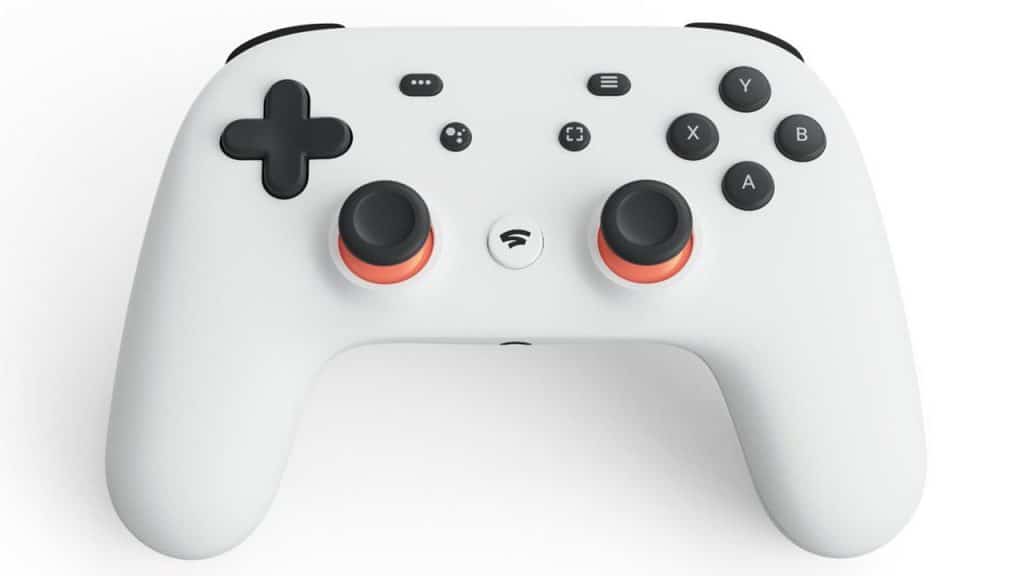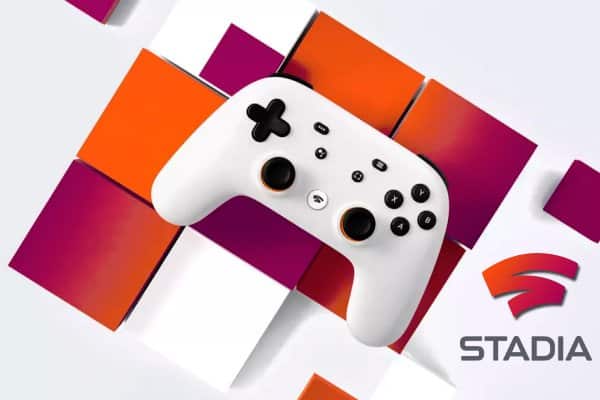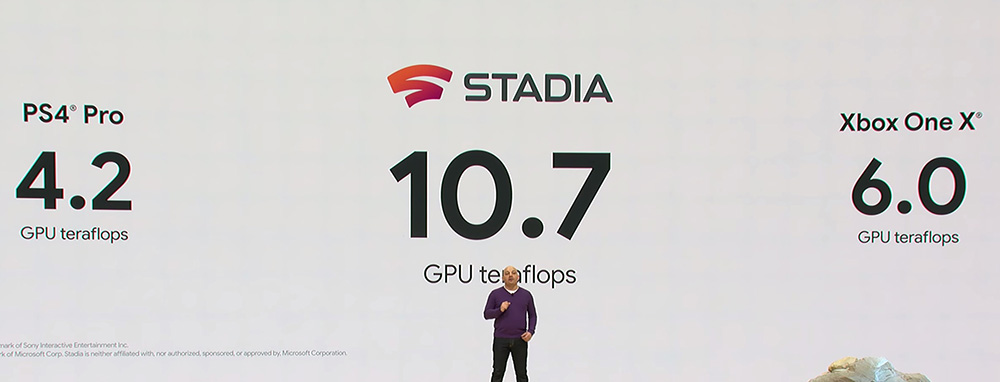Google launched its cloud gaming platform called Stadia at the recently concluded Game Developers Conference (GDC) 2019 held in San Francisco. The new platform aims to shake up the world of AAA games (games with the highest developmental budgets and promotions) by stripping down the playing requirements to as minimal as having just any device with an internet connection and a Chrome browser. You read that right!
No more expensive PC hardware.
No need to upgrade your RAMs and graphic cards.
Just stream games directly to your browser! And as mentioned before, these are not your low-key games by some indie developer, but proper AAA titles played on the Xbox One X and the PlayStation 4 Pro on 4K at 60 fps. Imagine playing these with just a device and a net connection!
According to a report by Cisco, the average global fixed broadband speed is projected to increase to a whopping 53-0 Mbps in 2021, from 27.5 Mbps in 2016, nearly a 1.9x increase. This indicates the future will all be about streaming services and their continual
Background
In 2018, Google started experimenting with cloud game streaming under ‘Project Stream’, allowing selected trial participants to stream and play Assassin’s Creed: Odyssey through the Chrome web browser. With mostly positive feedback for the beta version from several users, the scene was set to improve to the next level.
Let’s see what was finally announced for the next level, termed ‘Stadia’ at GDC 2019.
Netflix Of Gaming
Most streaming services suffer from latency issues while streaming high-end games. We all know how annoying it is when a split-second decision is the difference between winning and losing but suddenly the screen just freezes. Stadia intends to be the panacea for this headache. There won’t be any downloads required and no patches either – everything will be handled by super-powerful AMD-built servers with 10.7 FLOPs of computing power.

At GDC 2019, Google also released a special controller for the Stadia streaming service. The controller looks like a proverbial console gamepad with a dedicated button having in-built functionality to capture and stream games to YouTube.
According to Google, the Stadia controller will independently communicate with Google’s servers to connect to the internet, thus allowing you to stream games to a Chrome browser, a Google Pixel phone, and Chromecast.
How Fast Should Your Internet Speed Be To Run Stadia?
Well, we all know that nothing is actually as simple (at least when the project has just launched) as connecting to the internet and playing away through cloud streaming. For a smooth and solid gaming performance, the internet connection needs to be really fast. But how fast it should be?
Google VP Phil Harrison has some answers:
“We were able to test a lot of this with our Project Stream test late last year, starting back in October. To get 1080p, 60 frames per second, required approximately 25 megabits per second. In fact, we use less than that, but that’s where we put our recommended limit at. But with innovations that we’ve made on the streamer side and on the compression side since then, when we launch, we will be able to get to 4K but only raise that bandwidth to about 30 megabits per second. So if you have less bandwidth, we’ll give you a lower resolution… We do a lot of that for you in the background, and we will only offer up the appropriate bandwidth for the infrastructure that you have.”
Pricing details are expected to be revealed at E3 2019 and the platform itself will be officially rolled in the US, UK, Canada and Europe sometime in 2019
By the way, if you want to a hand-on review of the Google Stadia platform, you can read it here.
The Future Ahead

There is no denying that once it starts to mature, Google Stadia has the potential to completely upend the gaming market. Here are all the ways that you as a gamer will benefit:
- Start playing the game in as quick as five seconds.
- No updates, no downloads.
- The console is not your platform, the datacentre is. Play across any device, save your game progress across all.
- Play games like Doom Eternal at 4K 60 FPS with HDR support.
- Switch play seamlessly from PC to mobile.
- Game engines like Unreal, Unity and Havok can be easily integrated into Stadia, thus allowing developers to unleash their creativity without any limits.
As Phil Morrison said at GDC 2019:
“The worlds of watching and playing games converge into a new generation game platform, purpose-built for the 21st century, powered by the best of Google. Our vision for Stadia is simple: one place for all the ways we play.”
Stadia vs Consoles?

The question to be finally asked – will Google Stadia be the console killer? Will the Xboxes, PlayStations and Switches be rendered pretty much useless once Stadia assumed full maturity?
Speculating on the future is a big ask, especially with leading players like Sony and Microsoft willing to further innovate and explore beyond the realms of creativity in order to serve a thrilling gaming experience for their burgeoning fanbase.
The biggest advantage consoles hold is the extremely low latency they offer, which allows for blazing fast reactions during gameplay. And let’s not forget the advent of VR and its increasing popularity among gamers.
There was no mention by Google about VR support, so that is certainly something of note. With more companies investing in R&D for VR, this is an area touted to be a huge trendsetter for the gaming world.
Also, remember when pundits from several respected media houses had declared the console as ‘dead’, ‘dying’ and ‘already dead’ when the mobile gaming industry was booming?
Yeah, that never happened. Sony is still selling a bazillion PS4s every day. The Stadia could be a formidable challenge, perhaps in the distant future. But for now, let’s just stay excited at this new disruptor in the exhilarating world of gaming!













Leave a Reply